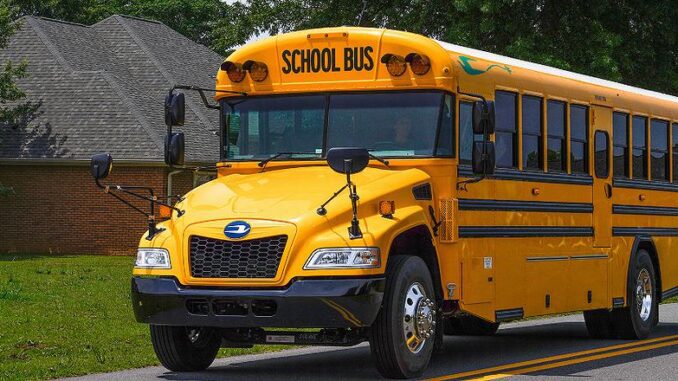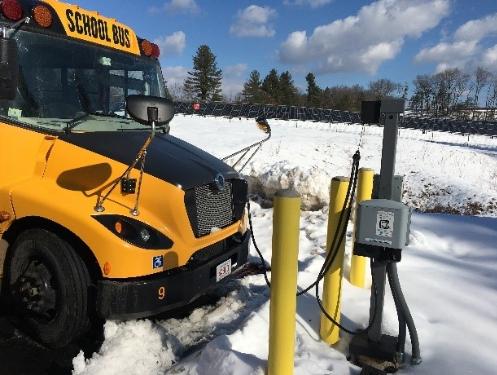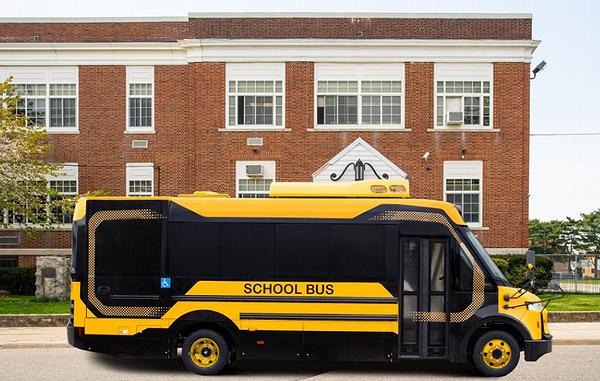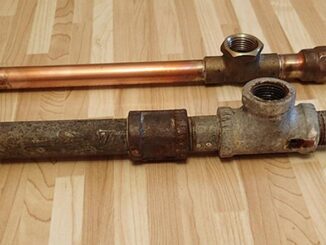
WASHINGTON, DC, January 9, 2024 (ENS) – Imagine waiting for the school bus – you’re trying to remember algebra for a test, you didn’t get much sleep because of your asthma, and the diesel school bus pulls up, reeking of emissions, making it hard for you to breathe again today.
When the 26 million U.S. children climb aboard one of the 480,000 yellow buses that gets them to and from school each day, the first thing too many of them inhale is diesel fumes. Over 90 percent of U.S. school buses run on diesel.
Each school bus burns about 1,700 gallons of fuel annually. That amounts to burning an estimated total of 734.4 million gallons every year, adding millions of tons of carbon dioxide and other greenhouse gases to the atmosphere.
“Today, we are announcing nearly $1 billion to fund clean school buses across the nation,” Vice President Harris said on Monday with a big smile.
Funded under the Bipartisan Infrastructure Law passed in 2021, the EPA is providing $5 billion over five years through 2026 to replace existing school buses with zero-emission and clean school buses, including electric buses.
The EPA’s $5 billion Clean School Bus program includes both a grant program where selected applicants are awarded funds to purchase buses, and a rebate program that allows selectees to receive awards before purchasing eligible buses that replace existing school buses with clean and zero-emission models.
The Clean School Bus grants announced this week are the second round of selections in the new program. The awards will help the selectees purchase over 2,700 clean school buses, and 95 percent of them will be electric. The new, cleaner buses will be on the road in 280 school districts serving over seven million students across 37 states.
“Every school day, 25 million children ride our nation’s largest form of mass transit: the school bus,” Harris said. “The vast majority of those buses run on diesel, exposing students, teachers, and bus drivers to toxic air pollution.”
“As part of our work to tackle the climate crisis, the historic funding we are announcing today is an investment in our children, their health, and their education. It also strengthens our economy by investing in American manufacturing and America’s workforce,” she said.
While new diesel engine standards and lower-sulfur diesel fuel make today’s buses 98 percent cleaner than the yellow buses were 20 years ago, and thousands of older buses have been modified with high tech filters and catalysts to cut emissions by up to 90 percent, diesel is still diesel, a dirty fuel source that contributes directly to climate change.
After an in-depth review, the EPA Clean School Bus Program selected the Notice of Funding Opportunity’s top tier applicants to receive this investment in their communities.
For instance in Alabama, Birmingham City Schools was chosen to receive $5.9 million to purchase 15 school buses with electric motors powered by batteries, replacing diesel.
“Clean School Bus grants will help selectees in the Southeast region purchase clean school buses that will accelerate the transition to zero emission vehicles and produce cleaner air in and around schools and communities,” Acting EPA Region 4 Administrator Jeaneanne Gettle said.

Most of the awardees will buy electric buses, with a small number, about 100 new buses, fueled with propane or compressed natural gas.
And in Montana, the Plains Public School will receive more than $13 million to buy 42 electric school buses with electric motors.
With the 67 new grantees, EPA’s Clean School Bus Program has awarded nearly $2 billion and funded 5,000 electric and low-emission school buses nationwide.
For an interactive map of the selectees under the EPA’s new Clean School Bus Program, click here.
Rebate Program Still Open
EPA is currently accepting applications for the 2023 Clean School Bus Rebate Program until January 31, 2024. EPA encourages applicants not selected for the 2023 Clean School Bus Grant Program – and those that did not apply – to participate in current and future funding rounds. Once the application period for the 2023 rebate program closes and the school districts selected are notified, school districts can proceed with purchasing new buses and eligible infrastructure.
Prioritized school districts in low-income, rural, and/or Tribal communities make up 86 percent of the projects selected for funding. Through this selection criterion, the program delivers on President Biden’s Justice40 Initiative, which aims to deliver at least 40 percent of the overall benefits of certain federal investments to disadvantaged communities that are marginalized, underserved and overburdened by pollution.

By accelerating the transition to low- and zero-emission vehicles, these awards will improve air quality for children and their families and advance environmental justice, all while boosting the economy and creating good-paying jobs.
“Today we’re once again accelerating the transition to electric and low-emission school buses in America, helping to secure a healthier future where all our children can breathe cleaner air,” said EPA Administrator Michael Regan.
“I’ve sat next to students on their very first clean school bus ride and their excitement reflects the power of good policy,” Regan said. “Thanks to President Biden’s historic investments in America, thousands more school buses will hit the road in school districts across the country, saving school districts money and improving air quality at the same time.”
The deliveries are already happening.
Blue Bird Corporation, the only U.S.-owned and operated school bus manufacturer in the United States, is supplying 23 electric school buses to Carter County Schools in Kentucky. The zero-emission vehicles mark a new era of clean student transportation for the school district. CCS operates 11 schools serving some 4,200 students.
“We are thrilled to deploy our very first electric school buses to lower the emissions of our school bus fleet,” said Dr. Paul Green, superintendent of Carter County Schools. “Clean student transportation is one of our top priorities. Blue Bird’s most advanced, zero-emission school buses will help us to create a healthier environment for our students and our communities at-large.”
The state-of-the-art electric Blue Bird school bus features an extended range of up to 130 miles on a single charge, faster battery charging with a full charge in three hours, and increased seating capacity.
“We are pleased that Carter County Schools places its trust in Blue Bird to help the school district transition to clean student transportation,” said Britton Smith, president of Blue Bird Corporation. “Electric school buses mean cleaner air to breathe.”
Senator Chuck Schumer of New York, a Democrat and the Senate Majority Leader, said, “Thanks to the Bipartisan Infrastructure & Jobs Law, as the wheels of the new, electric school buses go round and round, carbon emissions and pollution are going to keep going down and down,” he said.
“I led the Bipartisan Infrastructure & Jobs Law to passage so communities across the country will have the federal funding needed to combat climate change, and now, for the second year in a row, this major investment sets the wheels in motion to put new electric school buses on the road, curbing carbon emissions, decreasing pollution, and improving the air quality for students and communities across America,” Schumer said. “I am proud to deliver this tremendous environmental justice investment that will carry our students to a brighter future, emissions free.”
Featured image: Blue Bird electric school bus, 2023, Miami, Florida (Photo courtesy Blue Bird)
© 2024, Environment News Service. All rights reserved. Content may be quoted only with proper attribution and a direct link to the original article. Full reproduction is prohibited.



